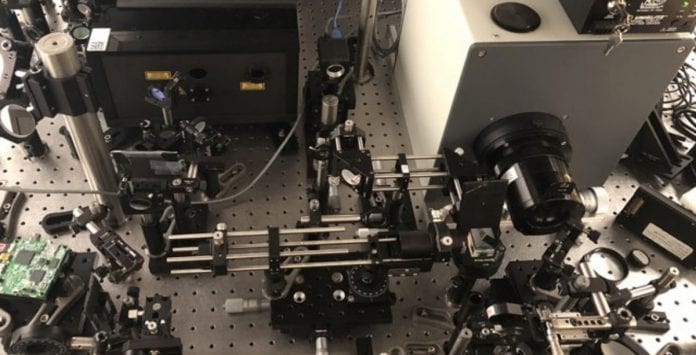‘World’s fastest camera’ that freezes images at 10 trillion frames a second is unveiled
Researchers from Quebec University’s Institute national de la recherche scientifique (INRS) and the California Institute of Technology (Caltech), have developed what they claim as the world’s fastest camera capable of capturing 10 trillion (1013) frames per second. On the other hand, an average smartphone camera manages to capture around 30 per second. The project was led by Caltech’s Lihong Wang along with Jinyang Liang, INRS professor, and ultrafast imaging specialist and his colleagues.
Dubbed as T-CUP, the new device is so quick that it literally makes it possible to freeze time to see phenomena such as light itself behave in extremely slow motion.
To build their camera, the researchers looked at compressed ultra-fast photography (CUP), a technique that can capture images at a speed of around 100 billion frames per second. T-CUP’s system is based on a femtosecond (one quadrillionth of a second) streak camera that also involves a data acquisition type used in applications such as tomography.
“We knew that by using only a femtosecond streak camera, the image quality would be limited,” said Professor Lihong Wang, the Director of Caltech Optical Imaging Laboratory (COIL) in a statement. “So to improve this, we added another camera that acquires a static image. Combined with the image acquired by the femtosecond streak camera, we can use what is called a Radon transformation to obtain high-quality images while recording ten trillion frames per second.”
According to the team, T-CUP has set a world record for real-time imaging speed and could be used to power a new generation of microscopes for biomedical, materials science, and other applications.
This camera represents a fundamental shift, making it possible to analyze interactions between light and matter at an unparalleled temporal resolution.
The very first time the ultrafast camera was used, it broke new ground by capturing the temporal focusing of a single femtosecond laser pulse in real time.
This process was recorded in 25 frames taken at an interval of 400 femtoseconds and detailed the light pulse’s shape, intensity, and angle of inclination.
“It’s an achievement in itself. But we already see possibilities for increasing the speed to up to one quadrillion (10 to the 15) frames per second. Speeds like that are sure to offer insight into as-yet undetectable secrets of the interactions between light and matter,” says Jinyang Liang, the leading author of this work, who was an engineer in COIL when the research was conducted.
The finding of the research was published in the journal Light: Science & Applications.

